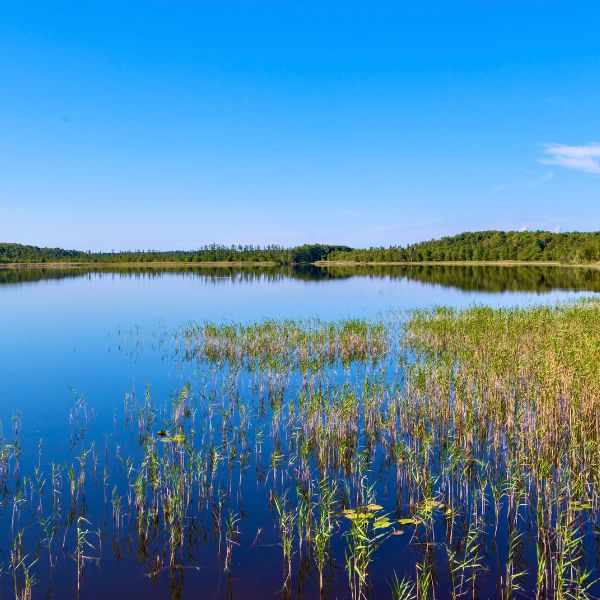- Home
- Natural Wonders of Germany
Natural Wonders of Germany: The Most Beautiful Places to Visit
By: Eran Fulson / Traveler, writer, and curious observer of all things German.
Generally famous for castles and bratwurst, natural wonders in Germany have their own significant flex. My guide rounds up some of Germany’s greatest geological show-offs. Ranging from mystical forests and storybook cliffs to lakes that look suspiciously Photoshopped. If you’re after day trip ideas, outdoor escapes, or just want to confirm that Germany is more than sausages and efficiency, this list has you covered.
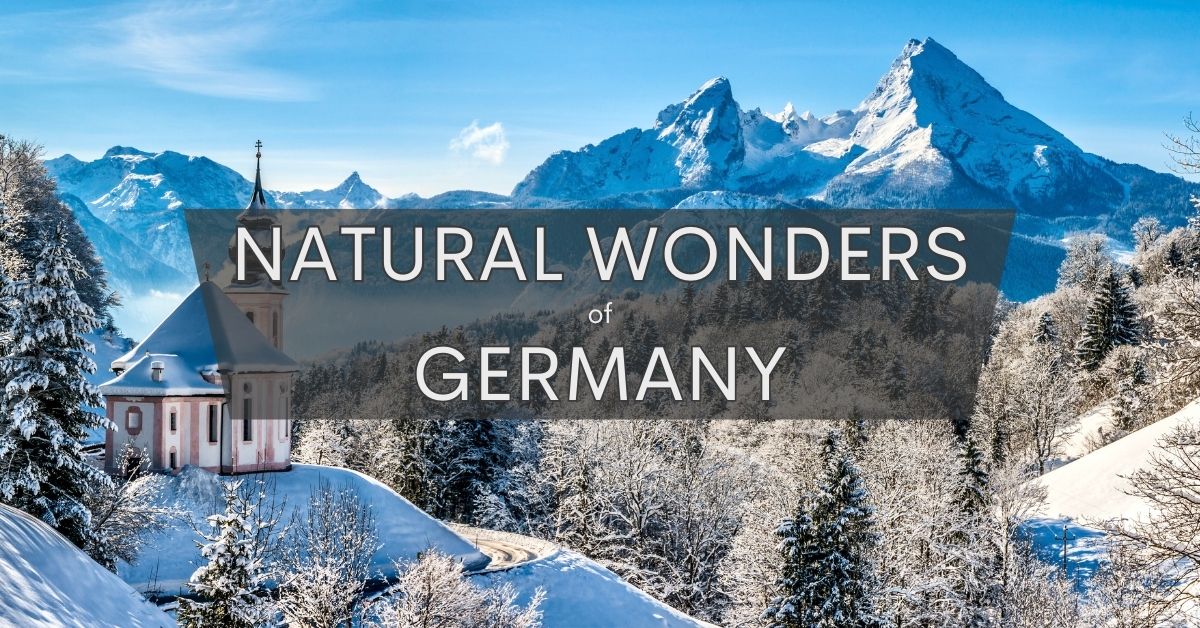
After traveling to the Canadian Rockies and back, the Scottish Lochs and Highlands, and the Austrian Central Alps, among others, I can confirm (though slightly biased) that Germany more than holds its own against any of the best natural wonders in the world.
On this page:
Yodel-ay-hee-hoo
Let’s start with one of the best places on the list, though that is arguably interchangeable as we move down the list: The Bavarian Alps.
Nestled in southern Germany near the Austrian border, the Bavarian Alps encapsulate more than just sheer natural beauty. There are the internationally recognizable Neuschwanstein Castle, a rich Bavarian culture, and one of the most beautiful places Germany has to offer.
Topping the heady list of 2,192 named mountains in the range is the Zugspitze - Germany’s highest peak at 9,718 feet above sea level. You won’t need to channel your inner Edmund Hillary to scale this one, as the Cable Car Zugspitze will have you to the top without breaking a sweat (unless heights aren’t your thing).
If you like staying a little more grounded, the Bavarian Alps are also home to many of Germany’s glacial lakes. And few more impressive than Königssee Lake (King’s Lake). Königssee Lake is 4.7 miles long and 1 mile at its widest. At its deepest, the lake is 623 feet, but averages around 328 feet, making it the third-deepest lake in Germany.
It is also one of the cleanest lakes. For more than one hundred years, the only boats allowed on it are pedal, rowing, or electric boats. Reminiscent of the fjords in Norway, the beautiful lake cuts through the mountain range like a hot knife through butter. Where mountains cease, a thick forest takes its place with idyllic Bavarian villages dotted throughout.
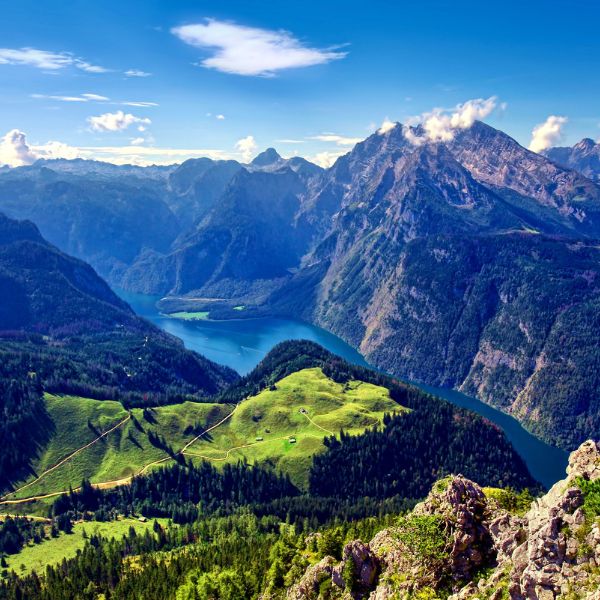 Königssee Lake cuts its way through the Alps.
Königssee Lake cuts its way through the Alps.Park Yer Buns Here
For everything in Germany, one-third of it is covered by forest and woodland. So if you love the outdoors, then you’ll find no shortage here of a national park or two. We’ve narrowed down the list to some of the best. And in no particular order:
Schleswig-Holstein Wadden Sea National Park
Nah, there is a particular order for this one being first, by simple virtue of its 1704.5 square miles being the largest national park in Germany - Schleswig-Holstein Wadden Sea National Park is also one with the longest name if you’re counting.
Situated in the Schleswig-Holstein area of the Wadden Sea, the park extends from the German-Danish border to the Elbe estuary. Its unbroken mudflats are the largest in the world and is a UNESCO biosphere reserve.
The mudflats are combined with sea-grass meadows and impressively large sandbanks, which host marine life in the form of gray and harbor seals and porpoises. It also welcomes migratory birds as a resting ground before heading off en masse.
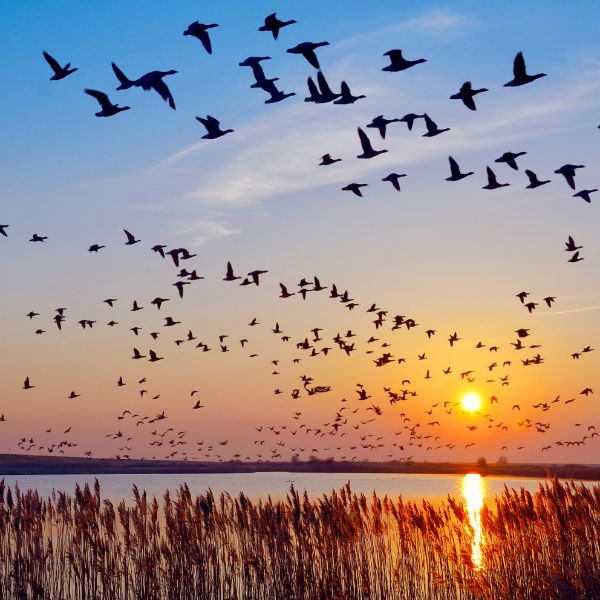
Saxon Switzerland National Park
And now, continuing on in no particular order, the Saxon Switzerland National Park in Lower Saxony. Residing by the Czech Republic (Czechia) and the Polish border, this national park is named as such due to its landscape resembling the Swiss homeland of its early explorers.
Due to its location in the Elbe Sandstone Mountains offering numerous unique rock formations, Saxon Switzerland is Germany’s only rock national park.
Personally, my favorite spot is the Bastei Bridge, built among giant pinnacles of sandstone rock towers. The panoramic views of this popular spot are simply breathtaking and make for a perfect day trip from Dresden.
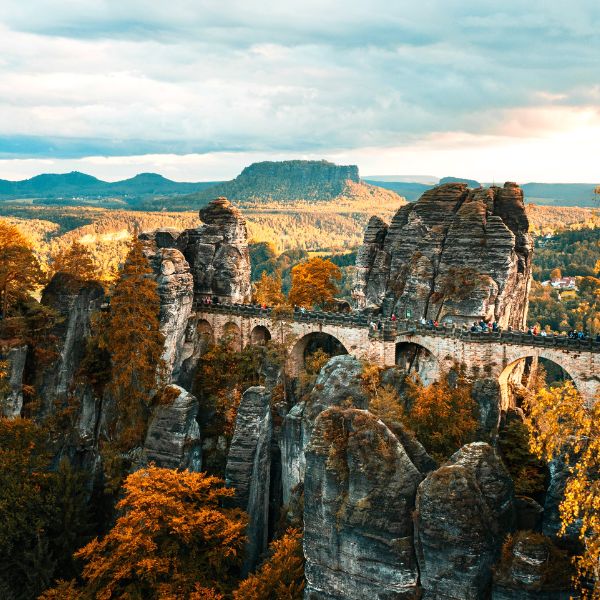
Berchtesgaden National Park
Traveling to southern Germany, near the Austrian border, we find the Berchtesgaden National Park. Germany’s only alpine national park, Berchtesgaden offers an unspoiled nature reserve filled with dense forests, rugged cliffs, glaciers, and tranquil green pastures nestled in sprawling valleys.
Living in this environment you’ll find red deer, ibex, golden eagles, and over 700 different kinds of butterflies. There are numerous outdoor activities as well as the previously mentioned Königssee Lake.
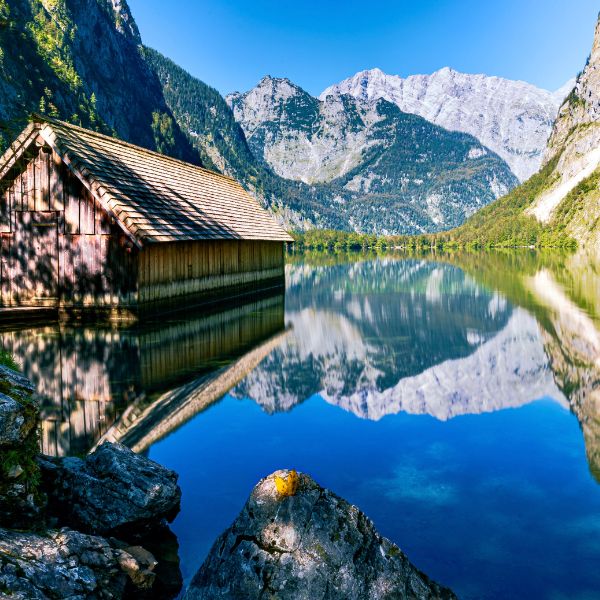
Harz National Park
Interesting fact
Ranger Busybody: There are only 39 rangers who oversee the 95 square miles of woodland.
Virtually uninhabited with near total forest coverage, the Harz National Park is one of the most environmentally complex reserves in Central Europe. The park stretches from the low mountains by Herzberg in the south to the northern slopes near Bad Harzburg.
Due to its elevation variance, 787 feet above sea level up to the peak of Brocken topping 3,743 feet, the ecology of vegetation and wildlife is equally diverse. The local tourist office estimates there are approximately ten million visits and more than five million overnight stays a year in the Harz Mountains and surrounding area.
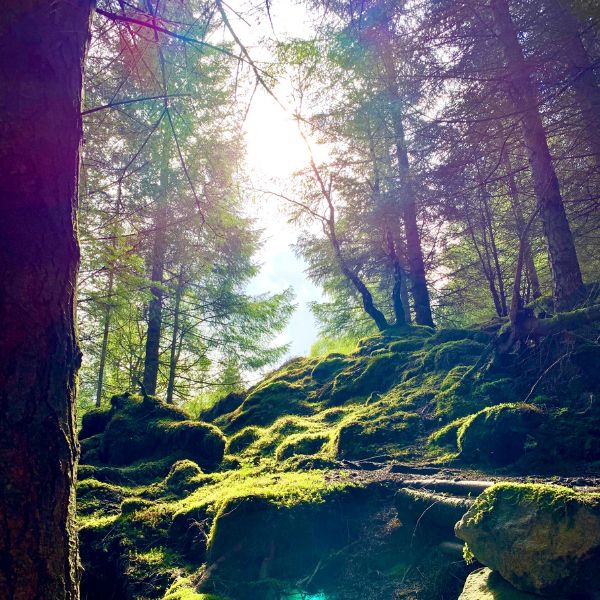
Bavarian Forest National Park
Heading back to Bavaria (see, no particular order, even just simple order) we find ourselves in Germany’s first national park - the Bavarian Forest National Park. Housed along the border of the Czech Republic, this national park is notable for its woodland being the largest forest region without human intervention in Central Europe.
Aside from the dense woodland, the protected habitat was also created for its resident wolves, lynx, brown bears, and a good deal of other wildlife lower down on the food chain. The Bavarian Forest National Park also features numerous trails of varying difficulty, including a wheelchair-accessible hiking path.
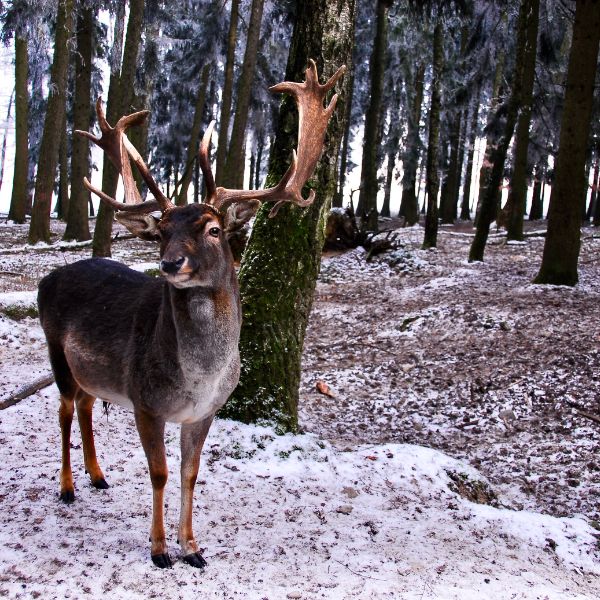
Black Forest National Park
Undoubtedly, the most famous park by name alone. The Black Forest National Park was given its edible namesake by the Romans, who were taken by the dense forest canopy blocking out the sunlight – hence, the Black Forest. These days, other than fairy tales, it’s anything but grim.
interesting fact
A Black Forest National Park ranger will run about six miles a day.
Its location in southwestern Germany offers a variety of seasonal change, giving stunning natural landscapes regardless of when you visit. The best bang-for-buck comes from driving the Schwarzwaldhochstrasse (Black Forest Scenic Route). Starting in Baden-Baden, it’s a great way to experience as much of this legendary nature park as you can without breaking a sweat.
If you do want to get the heart-rate pumping, try keeping your eye on the local peregrine falcons racing by at a mind-bending 242 mph.
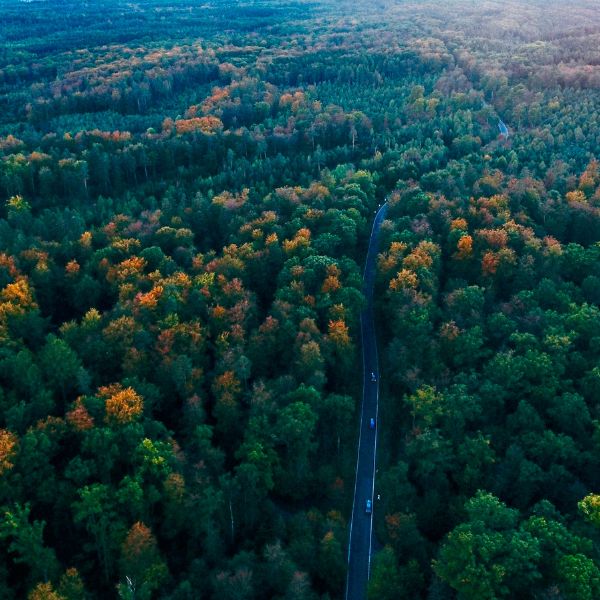
Jasmund National Park
The smallest national park (12 square miles) sits on Germany’s largest island - Rügen. Jasmund National Park packs one of the biggest punches with a line of chalk cliffs along the Baltic Sea with steep cliffs rising up to heights over 500 feet.
The cliffs of white limestone are vibrantly contrasted by the surrounding green forests, making this a perfect place to visit one of nature’s spectacular views.
While the cliffs look like the main attraction, it’s actually the ancient forests behind them that gained UNESCO World Heritage status for being the largest of continuous beech forests on the Baltic Sea. There are plenty of hiking trails and boat tours taking you around Jasmund for an ideal day trip out.
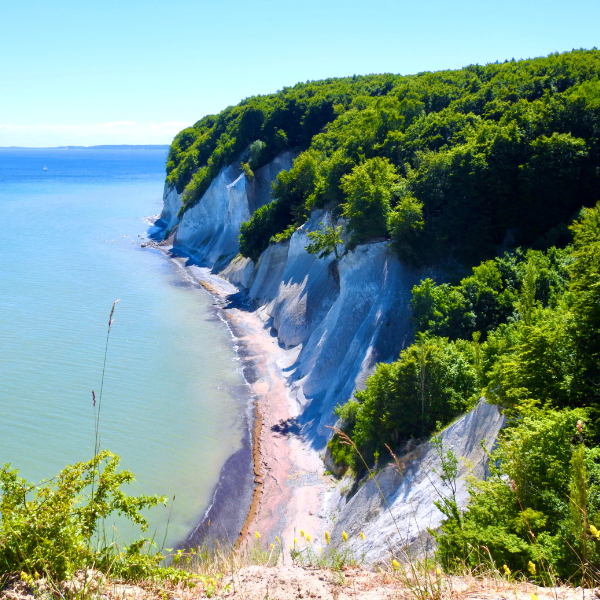
Müritz National Park
Wrapping up our favorite national parks is the Müritz National Park in northern Germany. While Schleswig-Holstein Wadden Sea National Park is technically the largest, given that the vast majority of it is water, Müritz is the largest by land area at 124 square miles.
Normally, I’m quite fond of the German propensity for its literal and efficient manner of place names. Müritz is an embellished outlier with a self-proclaimed tagline of, “Land of a thousand lakes” while still containing an impressive 130 lakes, centuries-old beech forests, and murky moors.
The lowland habitat of the national park offers a particularly unrivaled opportunity for bird watching. White-tailed eagles, ospreys, cranes, and approximately 220 other bird species use Müritz as a breeding ground and safe haven. Müritz is the perfect natural park for a variety of outdoor activities from bird watching, hiking, cycling, and canoeing.
Underground Fairy
Snow White might have had a different look if the Brothers Grimm had known about the Saalfeld Fairy Grottoes. Known as Feengrotten in German, these grottoes under the hills in Thuringia were mined for their once-famed mineral deposits.
For three hundred years until the 19th century, alum was extracted and used in medicinal products, food preservatives, and coloring cloths. It was long forgotten until the early 1900s when the mine was rediscovered and the fairy-like stalagmites, stalactites, and colorful rock formations hovering over eerily-still water were opened to the public.
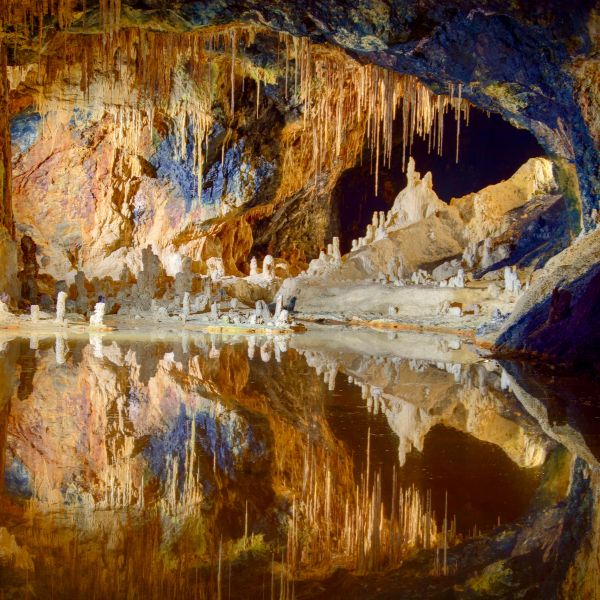
Ultimate Man Cave
Staying put in Thuringia, we find one of the most extraordinary underground geological monuments in Europe, the Barbarossa Cave. The literal subterranean kingdom covers more than 160,000 square feet and is only one of two anhydrite caves in Europe open to the public.
Anhydrite is in the gypsum family of minerals, and its reaction with water creates an ever-changing display of formations throughout the grottoes. The cave is named after Hohenstaufen Emperor Friedrich I who was a bit of a local legend and was crowned Emperor Barbarossa of the Holy Roman Empire.
Legend has it that he drowned while on a holy crusade, but people refused to believe it. Instead, a myth was created that he dwells in the cave. Myth or truth, though more likely myth, there’s no denying the awe-inspiring and cavernous underground kingdom gives chills beyond the temperature.
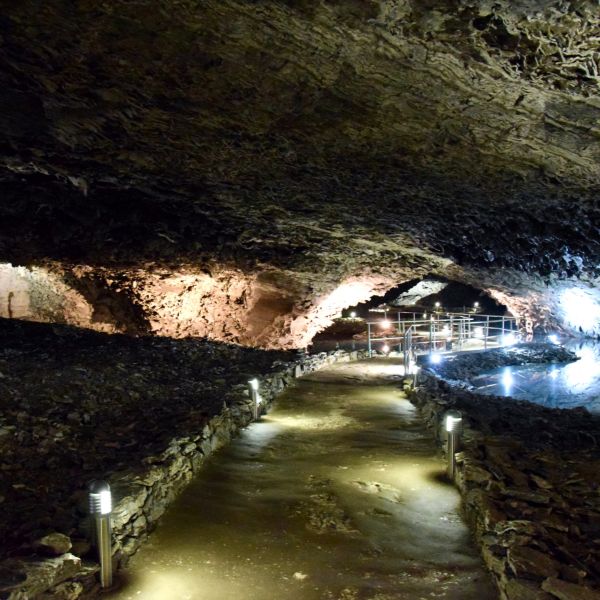
Needle in a Watery Haystack
44 miles off the northern coast of Germany in the North Sea is a small island called Heligoland. It was originally occupied by farmers and fishermen in the 15th century.
It changed hands between the dukes of Schleswig-Holstein to the Danish, then the British, who gave it to Germany in exchange for Zanzibar and other African territories in 1890. Due to its location, it was used as a naval base in World Wars I and II.
TOP TIP
Because of its unique location at sea, goods offered to buy on the island are duty-free.
These days the island functions as a base for scientific research and tourism. Notably, the island’s natural monument, the Lange Anna, is a major tourist draw. Rising 154 feet from the sea and weighing in at a staggering 27,000 tons, this needle has been slowly chipped away from the cliff by the sea.
So much so that the people of Heligoland built a 4,200-foot-long sea wall to help protect it and the west coast of the island from erosion. You’d better get along with your neighbors if you want to live here. 1,284 people live on this little 0.65 square mile chunk of red sandstone.
It’s an ideal day trip from Hamburg, with the FRS Helgoline ferry making the roughly two-hour trip past the colorful houses along the shoreline.
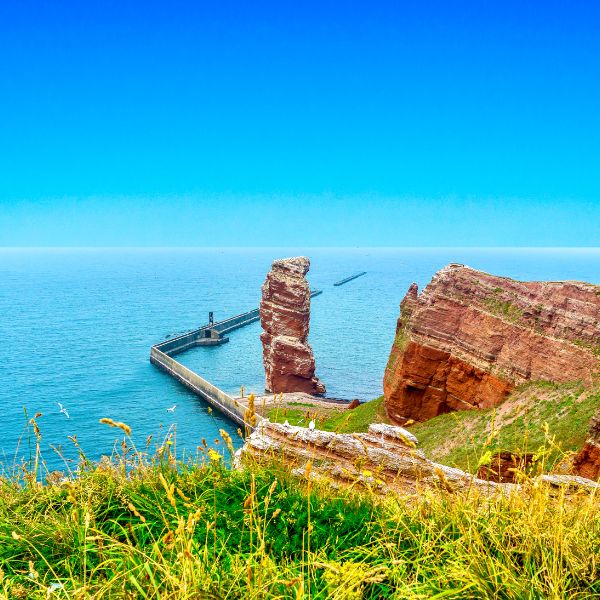
A Long Way to Rhine
It’d be remiss of me not to name-drop the Rhine before signing off. Globally synonymous with the natural wonders of Germany along with the Black Forest, the Rhine River is undoubtedly one of the most famous rivers in the world.
It’s domestically known for its scenic sailing and kayaking through the Upper Middle Rhine Valley. Economically, the Rhine facilitates industrial shipping as it also passes through Switzerland, Liechtenstein, Austria, France, and the Netherlands.
Rising from the river’s banks is the equally breathtaking Rhine Valley. So much so, that a forty-mile stretch of the Rhine Valley, between Bingen and Koblenz, is a UNESCO World Heritage Site.
Most well-known for its 1,000-year-old vineyards and being forever enshrined in literature, the Rhine Valley is Germany’s calming escapism. With sprawling hills and forests surrounding the Rhine River, there are few places that compare to its inescapable serenity.
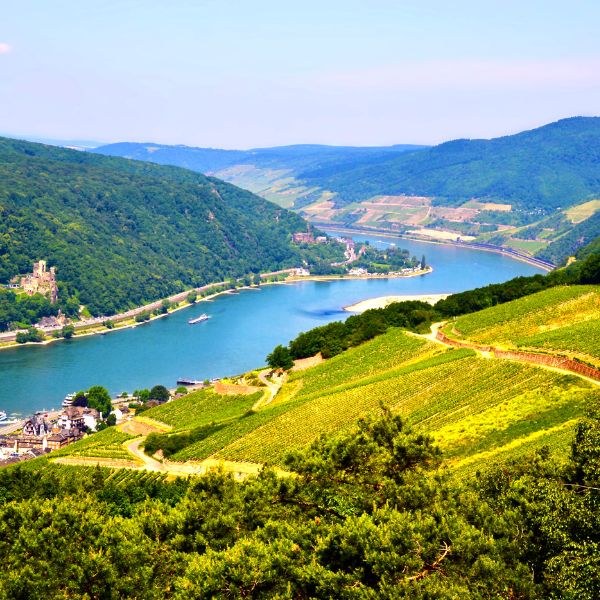
And Finally…
The natural wonders of Germany equally hold their own against all the culture, architecture, and history within its borders. From awe-inspiring heights to the serene lowlands, the only question to ask is not, “Have you seen..?” but rather, “When are you going?”

